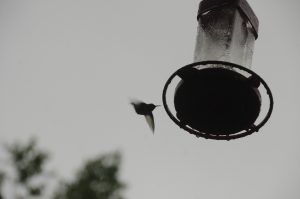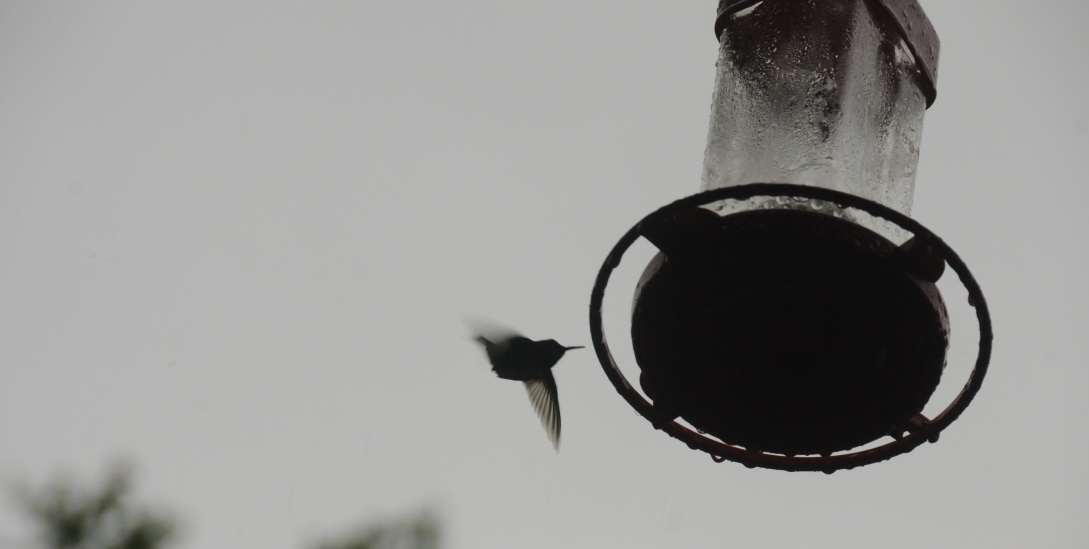Water Closet for September 15, 2017
Naturalist Fred Gralenski in far off Pembroke, Maine, has been sending the Middleton Stream Team his bimonthly, Quoddy Nature Notes, for over a decade. Below is a column from long ago, repeated recently, about hummingbirds. [pullquote]”The rookies will remain to hone their skills for a while, and then they, too, will move South. We hope they will return to liven up our outpost next Spring”[/pullquote]Gralenski a retired building contractor and a life long sharp-eyed naturalist reminds the Old Closeteer of the great French entomologist Henri Fabre. Gralenski studies the behavior of animals of all sizes and sees far more than the rest of us do. He, like Fabre, then reports with stories in often humorous language we all can understand. Here are observations about hummingbirds, seen ever more often in the last decade probably because of the increased popularity of hanging colored water feeders and flower gardens that include plants they like. Around here now some are seen along our streams and rivers as they visit a few lingering brilliant red cardinal flowers.
QUODDY NATURE NOTES
THE HUMMINGBIRD ESCADRILLE
By Fred Gralenski
Spring: The refueling stations had only just been established when the squadron commander appeared to reconnoiter. He was quite impressive with his red satin scarf shining in the sunlight, but he was all business as he methodically examined the refueling area and mapped out flight patterns in and out. After a few days, he was joined by his second-in-command, a more subdued individual with no flamboyant adornments. This team spent several days discussing, sometimes quite boisterously, the merits of establishing a base in our area. The fact that other squad leaders showed interest in the site helped convince them to stay and they made it quite clear that the other squads should establish themselves elsewhere. The aerial warfare between the squadron leaders with their red scarfs glittering as they dove, banked and rolled was very dramatic. After securing their base, the two set about building a barracks and preparing for the arrival of the new squadron.
Later: “Mon Dieu!” squeaked the commander in his gruffest voice, his ruby cravat flashing in anger, “You call that flying? This is the worst bunch of slugs I ever saw! Now do what I showed you – hover, back up, then attack! Bluff with your tail. And you, Andre, get those wings beating a lot faster. You sound like a fat butterfly, Jacques, you hang on the refueling station one more time and it’ll be the last thing you ever do! If you want to be an ant or a yellow jacket, there’s no room for you here!”

One of thousands of hummingbirds at sugared water feeders around the country – Fred Gralenski photo taken in Pembroke, Maine.
The new rookie squadron had arrived and were struggling. Their shiny green and white uniforms were slightly disheveled as they spent most of their time on maneuvers and little on preening. The squadron commander was always driving. He was everywhere, obviously infuriated by the rookie squadron’s sloppiness and lack of discipline. He continually stooped down on his team and berated them severely for their many shortcomings, sometimes forcing them to make emergency landings in the petunia patch. The second-in-command, at times, tried to intercede for the rookies but met with little success.
Late Summer: Eventually, the rigorous training paid off and the new squadron was able to engage in some breathtaking dogfights over, around and into the cosmos and lilies. The rookies were getting battle-hardened and the commander was no longer completely successful in forcing them from the refueling station. Now his sometimes tattered cravat flashed not with anger but with pride. Again, he and his second-in-command had done their jobs well; turning out a crack squadron ready for anything. The group has been transferred further South and the commander and assistant have already left to seek out an acceptable billet. The rookies will remain to hone their skills for a while, and then they, too, will move South. We hope they will return to liven up our outpost next Spring. Until then we bid adieu to the Hummingbird Escadrille!
______________________________________________________
WATER RESOURCE AND CONSERVATION INFORMATION
FOR MIDDLETON, BOXFORD AND TOPSFIELD
| Precipitation Data* for Month of: | June | July | Aug | Sept | |
| 30 Year Normal (1981 – 2010) Inches | 3.95 | 3.89 | 3.37 | 3.77 | |
| 2017 Central Watershed Actual | 6.08 | 3.43 | 1.22 | 2.0 as of Sept 8 | |
Ipswich R. Flow Rate (S. Middleton USGS Gage) in Cubic Feet/ Second (CFS):
For Sept 8, 2017 Normal . . . 3.8 CFS Current Rate . . . 14.4 CFS
—————————————————————-
*Danvers Water Filtration Plant, Lake Street, Middleton is the source for actual precipitation data thru Aug.
** Middleton Stream Team is the source of actual precipitation data for Sept..
Normals data is from the National Climatic Data Center.
THE WATER CLOSET is provided by the Middleton Stream Team: www.middletonstreamteam.org or <MSTMiddletonMA@gmail.com>


mitsuri hello my website is mitsuri
sgcwin hello my website is sgcwin
hk15 hello my website is hk15
uk-888 hello my website is uk-888
perih hello my website is perih
royal 4d hello my website is royal 4d
app 233 hello my website is app 233
penty hello my website is penty
js加固 hello my website is js加固
We loved the apt description of what we have been observing from our hummingbird feeder at the lake for the past month. Thanks, Fred. We look forward to their return on May 8, 2018. Their departure is right on time, too , on Sept.8. Amazing little creatures!